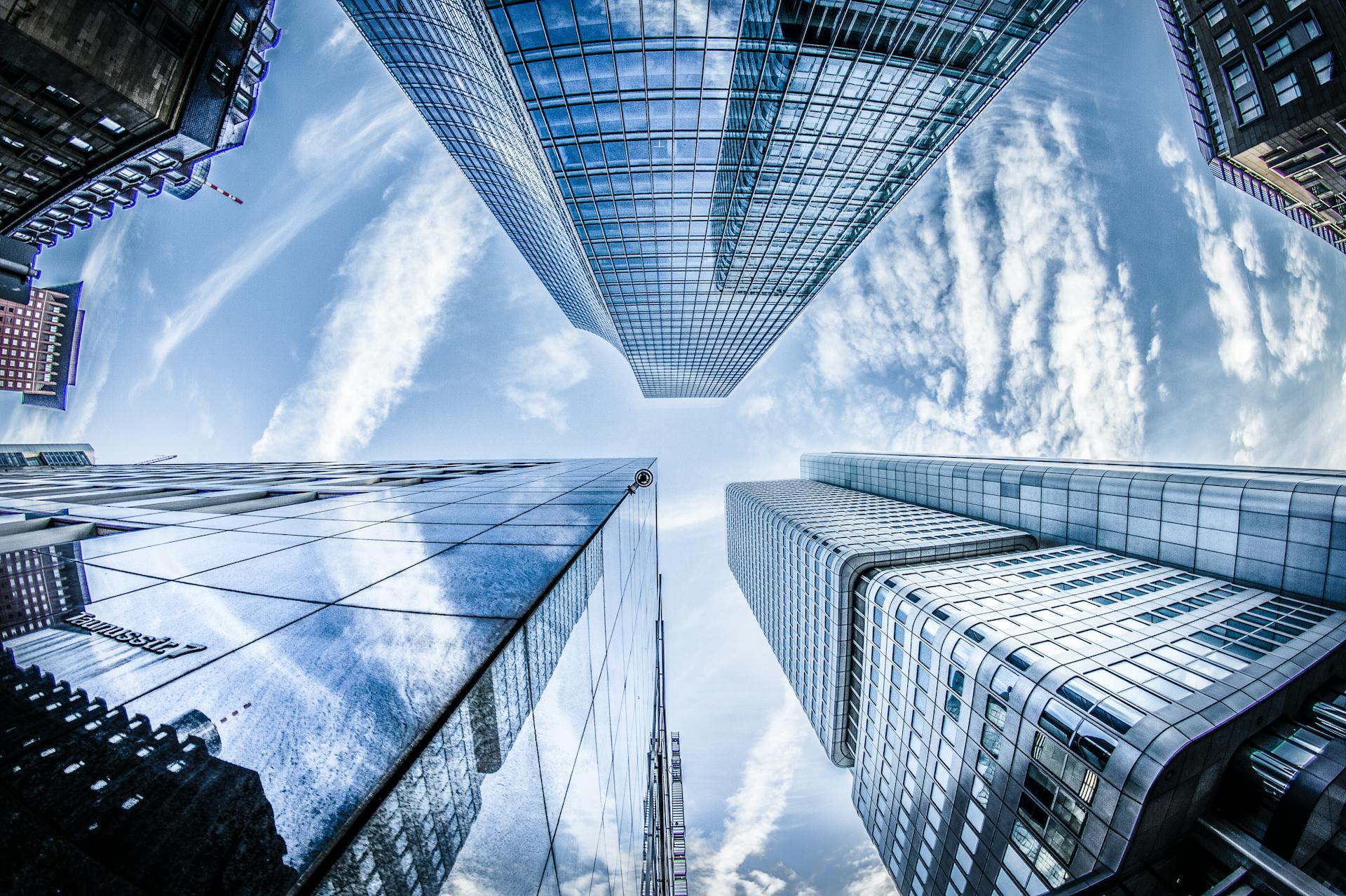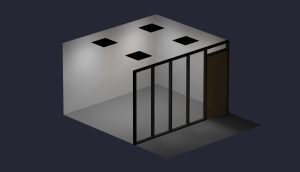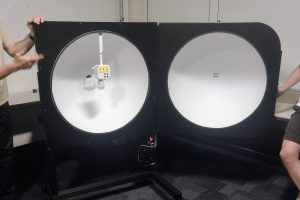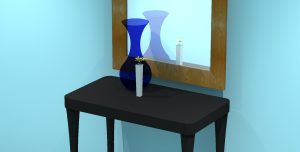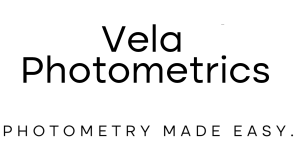Unlike other common architectural materials, the reflection from transparent glass may be omitted in typical lighting simulation. This is because smooth glass reflects light in a way that depends heavily on the angle at which it hits (known as the Fresnel Effect) and some simulation software doesn’t account for this interaction due to engine limitations. Here is a brief explanation of the light reflectance values(LRVs) of glass and their relation to simulation software.
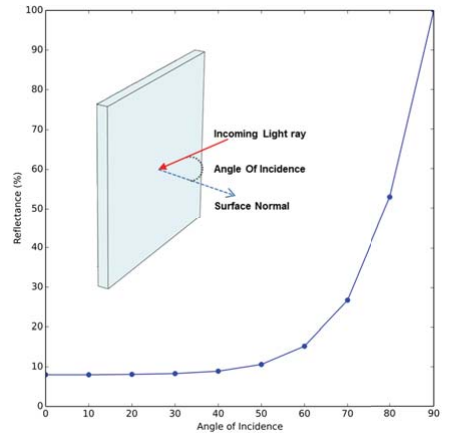
Clear Interior Glass
A variety of sources consider the reflective value of typical, untreated glass to be “small,” with testing results ranging from 4-8.5% at normal incidence (Baird, 2024; Harrison, n.d., Mohelníková & Altan, 2009; Bjørn et al., 2006; Danks, et al.). The 6% value listed for interior glass in Reflectance Values for Common Materials is the average of the consulted sources; this value is listed for reference only.
Exterior Glass
Vela Photometrics references no value for exterior glass in its list because such glazing comes in a variety of treatments to meet different goals of durability, appearance, privacy, energy efficiency, and natural light quality. A poor choice of exterior glass can cause solar reflections that can be not only a nuisance but also a “serious safety concern” (Danks, et al.).
Software Considerations
Popular radiosity-based software such as AGi32 and Visual simulate the transmission of light through transparent glass, however, they do not include the reflection from such surfaces. This is because these software calculate reflection as perfectly diffuse (Lambertian) and the specular nature of transparent glass cannot be interpreted by their engines (such surfaces instead absorb/drop any untransmitted light that strikes them). Software based on ray-tracing engines, such as Radiance and Photopia, do calculate such reflection.
As mentioned, radiosity-based software calculates reflections as perfectly diffuse. While unable to calculate reflectance from transparent surfaces (ex: glass), they can handle solid and translucent specular surfaces (such as polished marble or glossy, semi-transparent plastic), but the way they calculate them is a simplification.
The continued popularity of radiosity-based software by industry professionals arguably affirms that the reflective properties of clear glass are “small,” at least in a typical-use, architectural lighting simulation sense. Regardless, different simulation methods have their strengths and weaknesses (Witzel, n.d) and understanding how they handle glass differently is worth keeping in mind when interpreting lighting calculation results.
Conclusion
Glass is everywhere in architecture and its specular nature calls attention to the different ways popular software simulate reflection. The amount of light reflecting off of glass may be considered small in enough situations to warrant its exclusion in some simulation software, however, other software may be advantageous in situations where light is highly affected by Fresnel reflectance.
References
Danks, R. Good, J. Sinclair, R. (2016). Avoiding the Dreaded Death Ray: Controlling Facade Reflections Through Purposeful Design. Proceedings of the 2016 Facade Tectonics Insitute World Congress.
Baird, C. (2024, April 19). How can glass produce glare without reflecting light? West Texas A&M University. https://www.wtamu.edu/~cbaird/sq/2024/04/19/how-can-glass-produce-glare-without-reflecting-light/
Harrison, T. (n.d.). Light and Color, Reflection and Scattering: Why Things Look The Way They Do. New Mexico State University. http://astronomy.nmsu.edu/tharriso/ast110/class22.html
Mohelníková, J., & Altan, H. (2009). Evaluation of Optical and Thermal Properties of Window Glazing. WSEAS Transactions on Environment and Development, 5(1).
Bjørn, P., Gustavsen, A., Nilsen, T., Jacobsen, T. (2006). Solar material protection factor (SMPF) and solar skin protection factor (SSPF) for window panes and other glass structures in buildings. Solar Energy Materials and Solar Cells. 91, 342-354. http://dx.doi.org/10.1016/j.solmat.2006.10.017
Witzel, D. (n.d.). DIALux evo: New calculation method. DIAL. https://www.dialux.com/fileadmin/documents/DIALux_evo-_New_calculation_method.pdf
